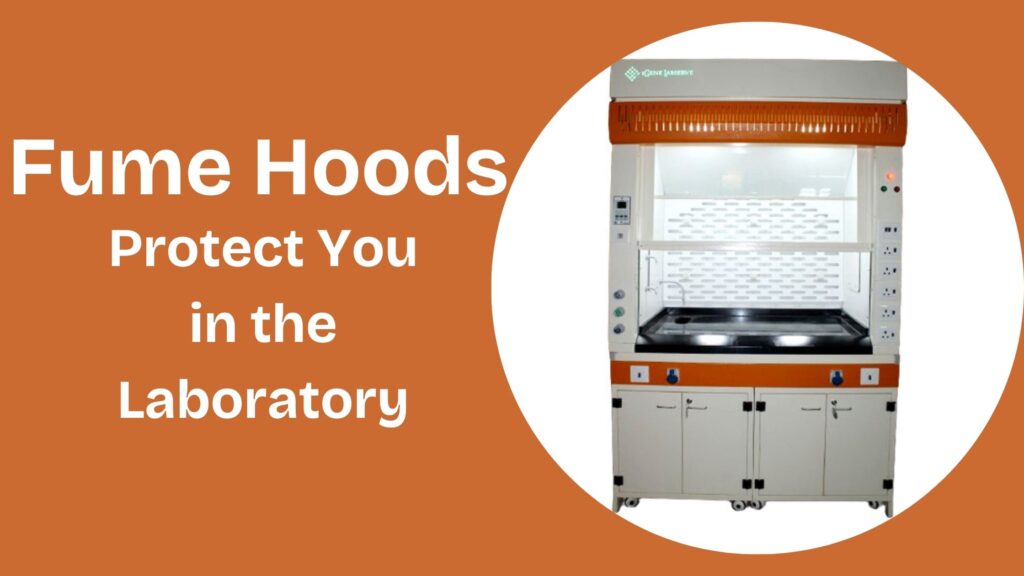When you walk into any modern laboratory, one piece of equipment stands out as both essential and protective — the fume hood. Whether you’re a student mixing chemicals in a school lab or a scientist working with volatile substances in a research facility, fume hoods are your first line of defense against airborne hazards. But how exactly do they protect you? Let’s explore the science, safety, and significance behind this powerful tool.
What Is a Fume Hoods?
A fume hood is a ventilated enclosure specifically designed to limit your exposure to hazardous or toxic fumes, vapors, and dust. Acting as a barrier between you and dangerous substances, it pulls contaminated air away from your breathing zone and either filters it or exhausts it safely outside the building.
There are two main types of fume hoods:
- Ducted Fume Hood: Vents harmful air through ducts to an external exhaust.
- Ductless Fume Hood: Uses HEPA and carbon filters to purify and recirculate air back into the lab.
Core components include the sash (the sliding glass front), baffles (airflow guides), blower fan, filters, and work surface.
The Dangers of Unprotected Exposure
Working with chemicals is inherently risky. Without proper ventilation, you could be exposed to:
- Toxic fumes like formaldehyde, chloroform, or ammonia
- Flammable vapors that could ignite from a spark
- Carcinogens and mutagens that can cause long-term health issues
- Corrosive agents that damage eyes, skin, and respiratory systems
Inhalation of even small amounts of these substances can result in headaches, dizziness, nausea, respiratory distress — or worse, chronic illnesses after prolonged exposure.
How Fume Hoods Work to Protect You
Here’s how a fume hood safeguards your health:
- Airflow: The hood draws air inward, pulling vapors and particles away from your face and toward the rear of the enclosure.
- Containment: Harmful substances are trapped inside the hood’s chamber, preventing them from escaping into the lab.
- Exhaust or Filtration: Ducted hoods remove air via an exhaust system; ductless models filter and purify the air before releasing it back.
This mechanism keeps both you and your workspace free from contamination and reduces the risk of inhalation or combustion.

Safety Features of Fume Hoods
Modern fume hoods are equipped with smart safety features to maximize protection:
- Sash height indicators: Show safe operating levels
- Airflow alarms: Warn if airflow drops below safe limits
- Explosion-proof components: Prevent accidents when working with volatile chemicals
- Spill containment trays: Minimize the spread of accidental spills
These features act as both preventive and corrective measures in maintaining a safe lab environment.
Proper Use for Maximum Protection
To truly benefit from a fume hood, proper usage is critical:
✅ Keep the sash at or below the recommended level
✅ Work at least 6 inches inside the hood
✅ Don’t overcrowd the workspace — allow air to circulate
✅ Close the sash when not in use
✅ Avoid storing chemicals permanently inside the hood
✅ Ensure the hood is functioning and inspected regularly
Poor usage can compromise even the best fume hood, so training and routine discipline matter.
What Happens If You Don’t Use a Fume Hoods?
Unfortunately, the consequences can be severe. Labs that neglect proper fume hood usage have experienced:
- Chemical exposure incidents requiring hospitalization
- Cross-contamination of experiments
- Lab fires due to flammable vapors
- Regulatory violations resulting in fines and shutdowns
In one case, a researcher suffered chemical burns after performing an acid dilution outside of a fume hood — an easily preventable accident.
Benefits Beyond Personal Safety
While personal protection is the primary goal, fume hoods offer several added advantages:
- Environmental protection: Controls chemical emissions into the atmosphere
- Experiment integrity: Prevents contamination or interference
- Clean workspace: Helps contain dust and spills
- Lab compliance: Helps meet OSHA, ANSI, and EPA safety standards
Even the best fume hood won’t perform well without regular maintenance:
Maintenance and Care
- Annual inspections to test airflow and filter efficiency
- Routine cleaning of baffles and sashes
- Filter replacements (for ductless models) every 6-12 months
- Usage logs and performance records to ensure accountability
Neglecting maintenance can turn a safety tool into a liability.
Conclusion
In any lab setting, the fume hood isn’t just another piece of equipment — it’s a life-saving shield. From protecting your lungs to keeping your experiments uncontaminated, it does the silent but critical job of ensuring your safety every day.
So next time you prepare your workspace, ask yourself: Is the fume hood on? Is it positioned correctly? Am I using it the right way?
Because when you treat your fume hood with the respect it deserves, it will return the favor — by keeping you safe, one breath at a time.

